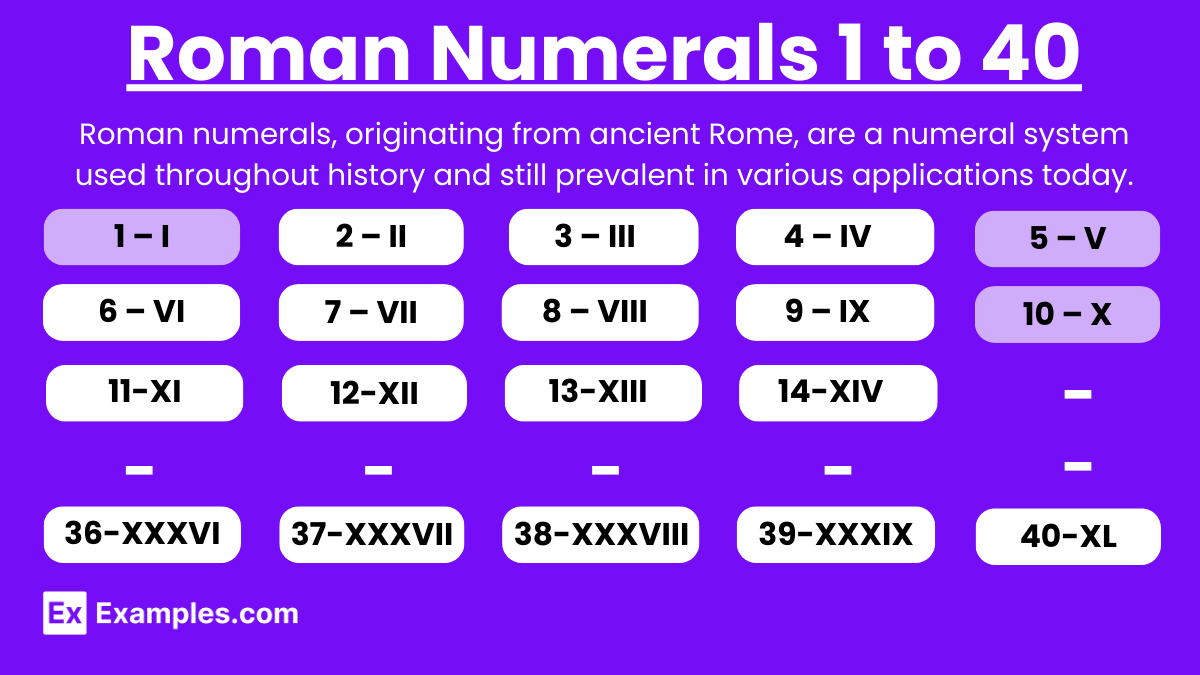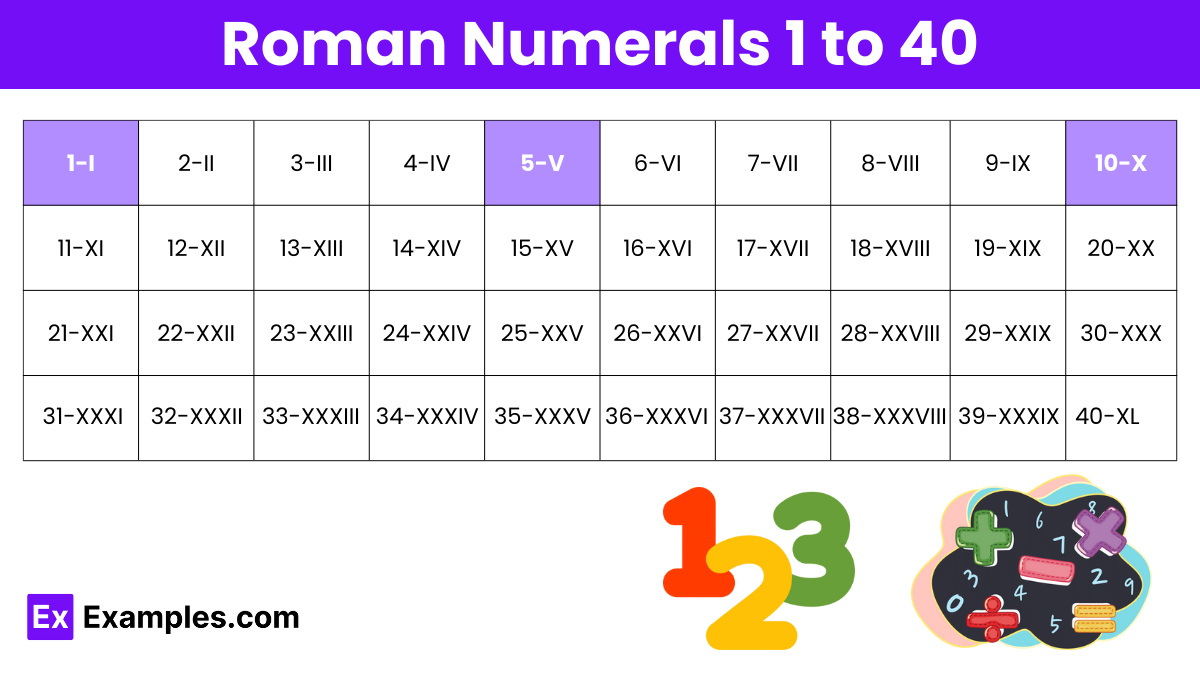What is the Roman numeral for 22?
XXI
XXII
XXIII
XXIV


Roman numerals from 1 to 40 provide a fascinating glimpse into the numerical system used by ancient Romans, which is still in use today for various purposes. This system employs combinations of letters from the Latin alphabet: I (1), V (5), X (10), L (50), C (100), D (500), and M (1000). The numerals from 1 to 40 are represented as follows: I, II, III, IV, V, VI, VII, VIII, IX, X, XI, XII, XIII, XIV, XV, XVI, XVII, XVIII, XIX, XX, XXI, XXII, XXIII, XXIV, XXV, XXVI, XXVII, XXVIII, XXIX, XXX, XXXI, XXXII, XXXIII, XXXIV, XXXV, XXXVI, XXXVII, XXXVIII, XXXIX, and XL. Understanding these numerals is crucial for students and enthusiasts of history and mathematics, as they are frequently encountered in various contexts, including clocks, books, and historical documents.
Download Roman Numerals 1 to 40 in PDF

Download Roman Numerals 1 to 40 in PDF
| 1-I | 21-XXI |
| 2-II | 22-XXII |
| 3-III | 23-XXIII |
| 4-IV | 24-XXIV |
| 5-V | 25-XXV |
| 6-VI | 26-XXVI |
| 7-VII | 27-XXVII |
| 8-VIII | 28-XXVIII |
| 9-IX | 29-XXIX |
| 10-X | 30-XXX |
| 11-XI | 31-XXXI |
| 12-XII | 32-XXXII |
| 13-XIII | 33-XXXIII |
| 14-XIV | 34-XXXIV |
| 15-XV | 35-XXXV |
| 16-XVI | 36-XXXVI |
| 17-XVII | 37-XXXVII |
| 18-XVIII | 38-XXXVIII |
| 19-XIX | 39-XXXIX |
| 20-XX | 40-XL |
Mastering Roman numerals from 1 to 40 involves understanding the combination of basic symbols: I, V, X, and L, representing 1, 5, 10, and 50 respectively. The numerals follow specific rules of repetition, addition, and subtraction to form numbers, such as III for 3, IX for 9, XV for 15, XX for 20, and XL for 40. This knowledge not only provides a historical perspective but also enhances numerical literacy in contexts where Roman numerals are still used, such as in book chapters, clock faces, and event numbering, making it a valuable skill for various applications.
Text prompt
Add Tone
10 Examples of Public speaking
20 Examples of Gas lighting
What is the Roman numeral for 22?
XXI
XXII
XXIII
XXIV
Which Roman numeral represents 30?
XXV
XXIX
XXX
XXXI
What is the Roman numeral for 37?
XXXVII
XXXVIII
XXXIX
XL
Which Roman numeral represents 14?
XIII
XIV
XV
XVI
What is the Roman numeral for 28?
XXVIII
XXIX
XXVII
XXX
Which Roman numeral is equal to 33?
XXXII
XXXIII
XXXIV
XXXV
What is the Roman numeral for 40?
XXX
XXXI
XXXIX
XL
Which Roman numeral represents 18?
XVII
XVIII
XIX
XX
What is the Roman numeral for 26?
XXV
XXVI
XXVII
XXVIII
Which Roman numeral represents 35?
XXXIV
XXXV
XXXVI
XXXVII
Before you leave, take our quick quiz to enhance your learning!

